by Frances Clark, Lead Ambassador Nature Mapping Jackson Hole
At this time of year, people see their lawn and gardens riddled with ground squirrels or pocket gophers or their trees chewed to toppling by beaver and ask, “What is the purpose of these pests?”
Small mammals serve as prey for our large mammals and raptors and provide other ecological services, such as aeration and recycling of soil and nutrients. Beaver, our largest rodents, form habitat for many other creatures, although they are a nuisance to homeowners with ponds and aspen plantings.
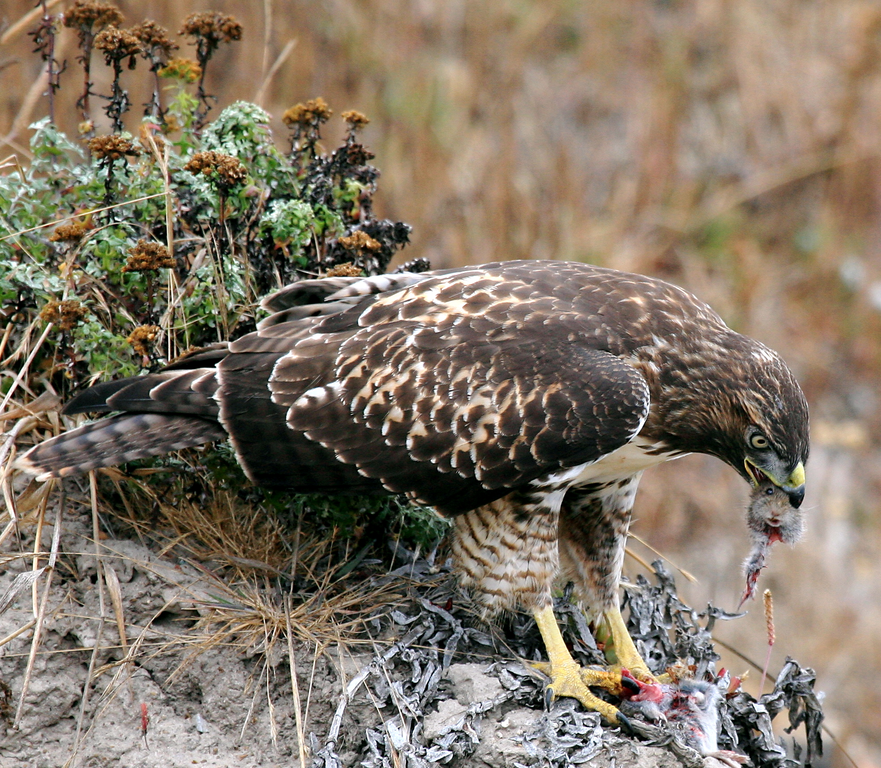
Small mammals serve as prey for raptors and other animals. Photo: Steve Jurvetson
Uinta ground squirrels are common in sage and grassland habitats, and they find similar features in lawns. They dig tunnels and form sleeping chambers, thereby creating holes and mounds, much to the consternation of homeowners and ranchers. I have nature mapped dozens and dozens of ground squirrels driving out the National Elk Refuge road in spring. Indeed they emerge and mate in April and each pair can produce four to seven young by May, which then scamper about every which-way eating grasses and flowers. Their abundance can seem overwhelming, even repulsive.
Driving out this same route a day in mid-June, I spied several red-tailed hawks, Swainson’s hawks and even golden eagles soaring overhead and a coyote or two trotting through the fields, ears alert. The high-pitched alarm calls of ground squirrels came from all directions. I realized the abundance of raptors was due to the plentitude of squirrels. Uinta ground squirrels are tasty packets of protein. They are a necessary and timely food source for raising young raptor chicks, red fox kits and coyote pups. And the time is short… Uinta ground squirrels are above ground only three months before they go dormant in August for the next nine months. Many don’t make it.
Other raptors, including northern harriers, prairie falcons and American kestrels, hunt open areas for rodents in sizes appropriate to their body weight. In addition to Uinta ground squirrels, least chipmunks, meadow voles and deer mice are important components of their diets. In old growth forests, red-backed voles nourish northern goshawks and pine martens. Great horned owls also devour small mammals. Fortunately, most small rodents don’t bother us humans.
Another annoyance in cultivated areas is northern pocket gopher. As snow melts, one can see the extensive “eskers” that mark the pocket gophers’ progress underground eating roots, rhizomes and tubers for food. In summer, occasional fresh mounds of soil indicate areas of activity. Rarely does one see a whiskered grey face, with tiny eyes and ears, emerge from a hole. Bear, fox and coyote use their ears to find this plump fossorial (digging) prey. The Teton Raptor Center is monitoring pocket gophers as part of their population studies of the majestic great gray owl. Great gray owls can hear pocket gophers moving under feet of snow and plunge feet first to catch their vital winter meal.
In addition, pocket gophers are particularly important in enhancing soils in mountain meadows. Their prodigious earth movement churns up nutrients, allows water and air to seep into hard-packed soils and provides opportunities for seed germination.
Young beaver move up creeks and irrigation ditches to find new territory to raise a family. The sound of running water and presence of willows and aspen stimulates dam building. Some of these appealing sites are now landscaped into ponds surrounded by aspen trees. Beaver build dams to impound water to serve as moats and insulation for their lodges, where they raise their young and keep safe. Anyone who has visited Schwabacher’s Landing or Moose-Wilson Road in the park has witnessed the diversity sustained by these industrious rodents. Beaver impoundments encourage willows, sedges and aquatics, which in turn provide food and shelter for ducks, sora, amphibians and moose. The U.S. Forest Service and other groups are moving trapped beavers up drainages to enhance wildlife habitat and also to help with flood control and water quality. While beaver can be pesky in our expanding human habitats, they are much needed in our natural habitats.
Even the most lowly, annoying-to-us critter has a role to play in our ecosystem. While no one wants wildlife in our homes, understanding the importance of each species in Jackson Hole can enhance our enjoyment of the out-of-doors, even in our own backyard.
How to Nature Map Small Mammals:
Nature mappers can help record the use of habitats — both cultivated and wild — by many of our often unseen or unappreciated small mammals. Here are some tips for mapping a few rodents and related species:
Uinta ground squirrels are buffy brown, about a foot long, with short tails. They often sit erect near the entrance to their burrow holes or look like soft lumps of manure on the edge of roads, until they move. We particularly encourage notations on the First of Year (FOY) appearances in March and April and Last of Year (LOY) sightings in late July and early August.
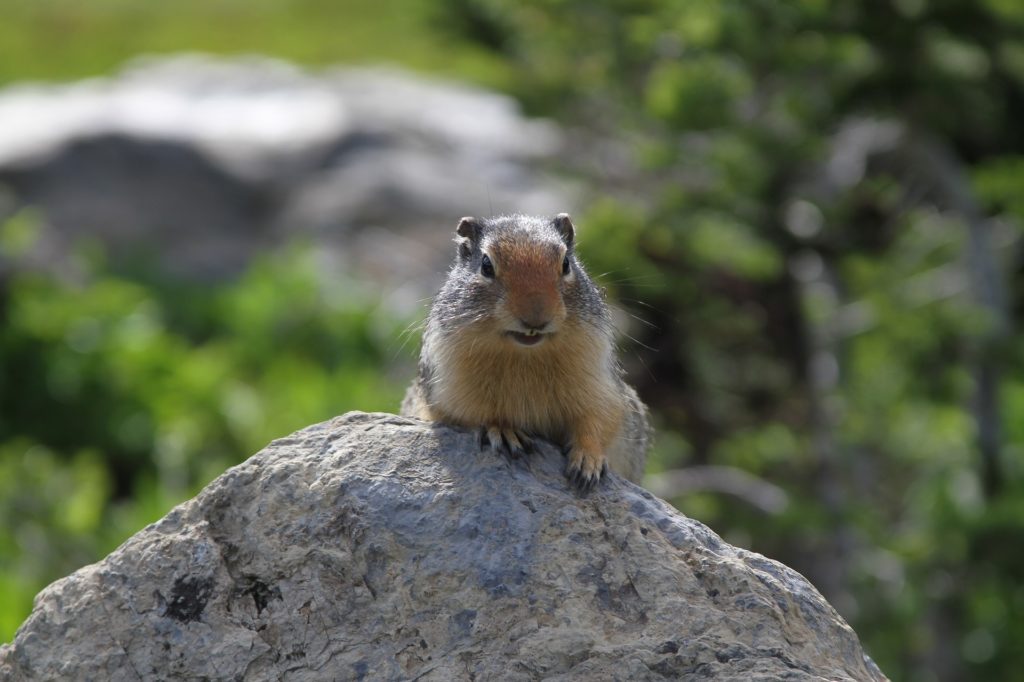
Uinta Ground Squirrel
Our other ground squirrel, Golden-mantled ground squirrel, looks like a chipmunk due to two set of stripes on its back, but unlike chipmunks, it does not have stripes on its head or tail. These are mostly found in forests, rocky areas and some shrubby sites, particularly at higher elevations.
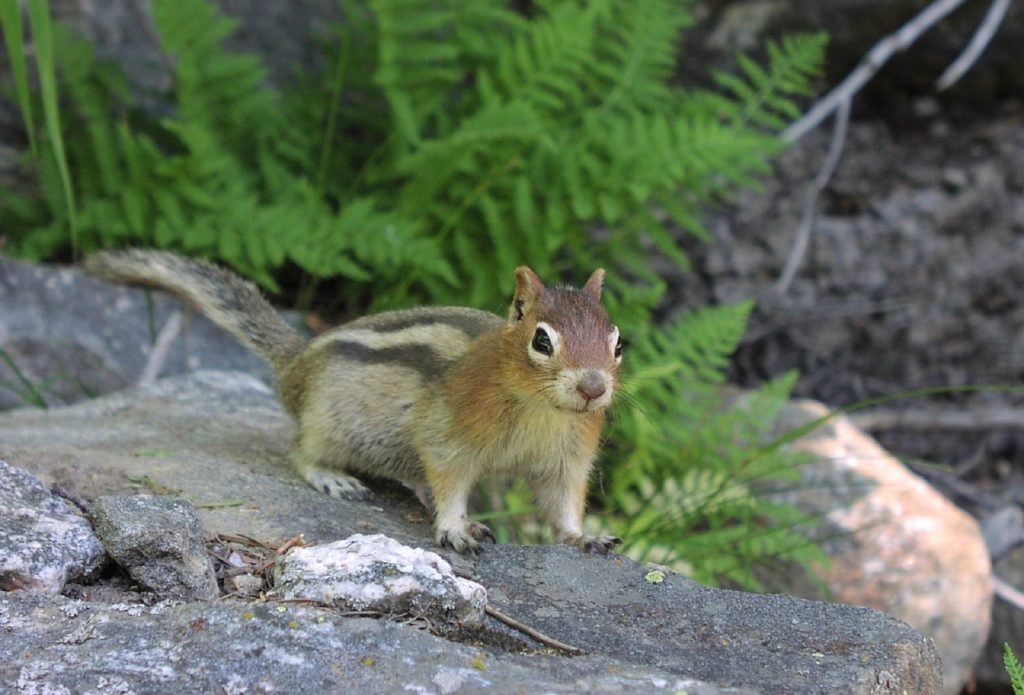
Golden-Mantled Ground Squirrel
We have three species of chipmunks: all have stripes on their heads, backs, and to some extent down their tails. Least chipmunk is more likely in the sage flats and runs with its tail straight up. The tail is longer than its body. It is smaller and darker on its belly than the Uinta chipmunk, which is found more in coniferous forests or shrubby areas. Uinta chipmunk tends to have a lighter belly and a wider tail. Unlike the other two species found in Jackson Hole, Uinta chipmunks have a white outermost stripe along their backs (rather than a fairly distinct black or blackish-brown stripe), which is shown nicely in this Berkeley photo. Relatively more brightly colored, yellow pine chipmunk is also a forest species and has orange highlights. These can be very difficult to distinguish. Do your best, but when in doubt leave it out.

Three Chipmunks in Jackson Hole: Least (left), Uinta (middle) and Yellow Pine (right). Middle and right photos Wyoming Game & Fish Department (WGFD).
Northern pocket gophers by their nature are hard to see unless you are lucky. These gray, 8 inch animals have small eyes, tiny ears, and large front feet with noticeable claws. Their tunnels are obvious either as 3-4 inch rounded eskers left over from winter foraging or fresh mounds of soil about a foot wide and several inches high in summer. This “sign” can be used to indicate areas of abundance in sage flats, meadows or forest openings.
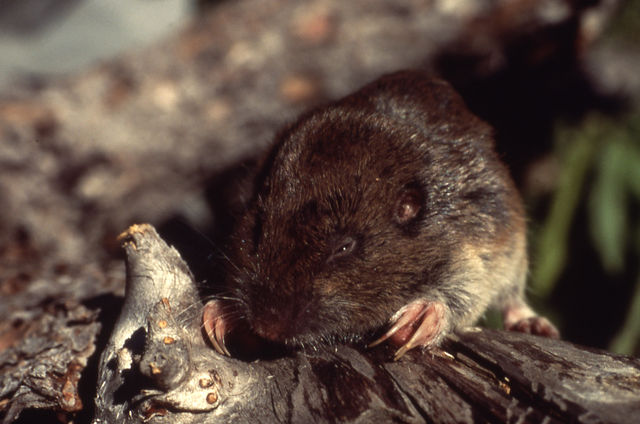
Pocket Gopher, Yellowstone National Park; Gillian Bowser; 1990
Mice, voles, and shrews are impossible to identify to species; therefore, we encourage nature mappers do their best record the groups. Mice have big ears and long tails. Voles have smaller ears and shorter tails and look relatively compact compared to mice. Shrews, which are a separate family, have elongate pointed heads with small eyes and ears and many teeth to eat their prey of insects, earthworms and the like. Tails vary in length. Our common species is masked shrew. We do not have moles in Jackson Hole.

Mouse (left), Vole (middle), and Shrew (right).
Beaver can be distinguished from their relative muskrat by their flat vs. rat-like tails seen while swimming in water. While both have rich brown pelts, beaver are usually bigger with a flatter head and are found among willows or other woody plants, which they use for food and dam building. Muskrats use soft-stemmed cattails, reeds and rushes to form their mounds and for food; therefore, they are more likely in wet meadows and marshes.
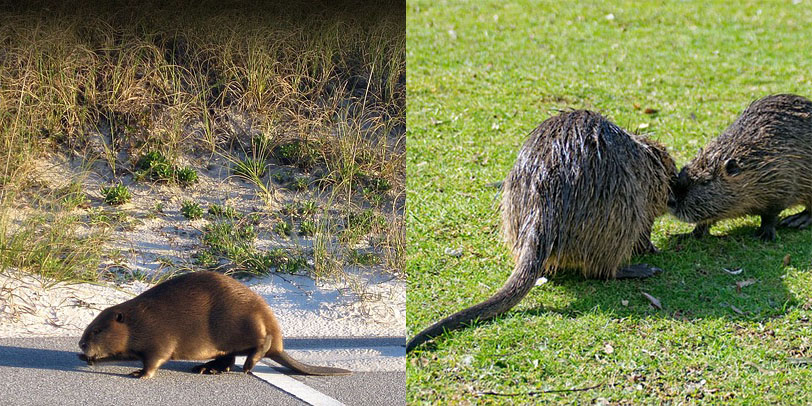
Beaver (left) has a flat tail while its relative, the Muskrat (right), has a rat-like tail.
Red Squirrels: Many people recognize the wide-eyed, bushy-tailed red squirrel found in forests and porches. Often we hear their chatter in the deeper forest. These tree squirrels are defending their territories and particularly their caches of cones. If you happen to see an active “midden,” pile of cone scales and stalks, take a point. This is an indicator of highly productive trees and possible pine marten habitat.
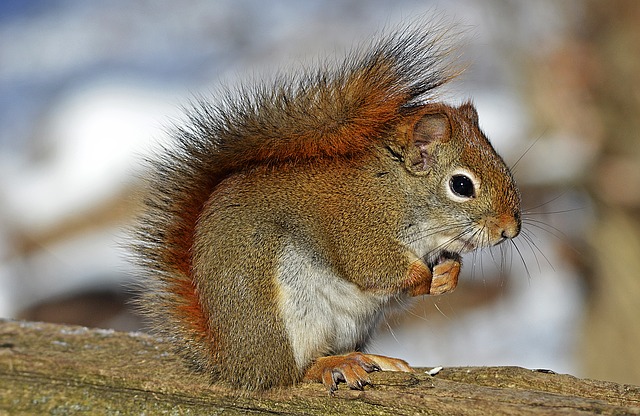
Red squirrel
